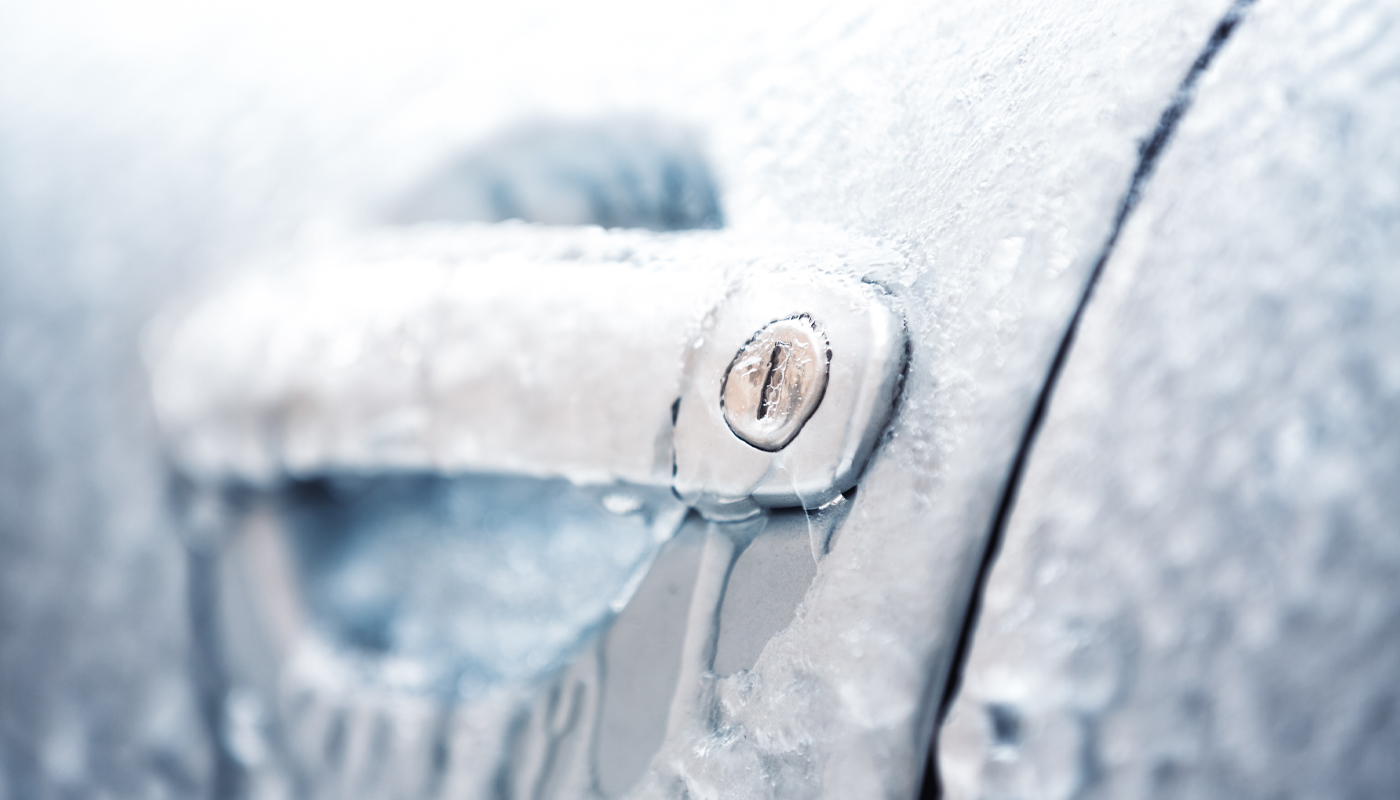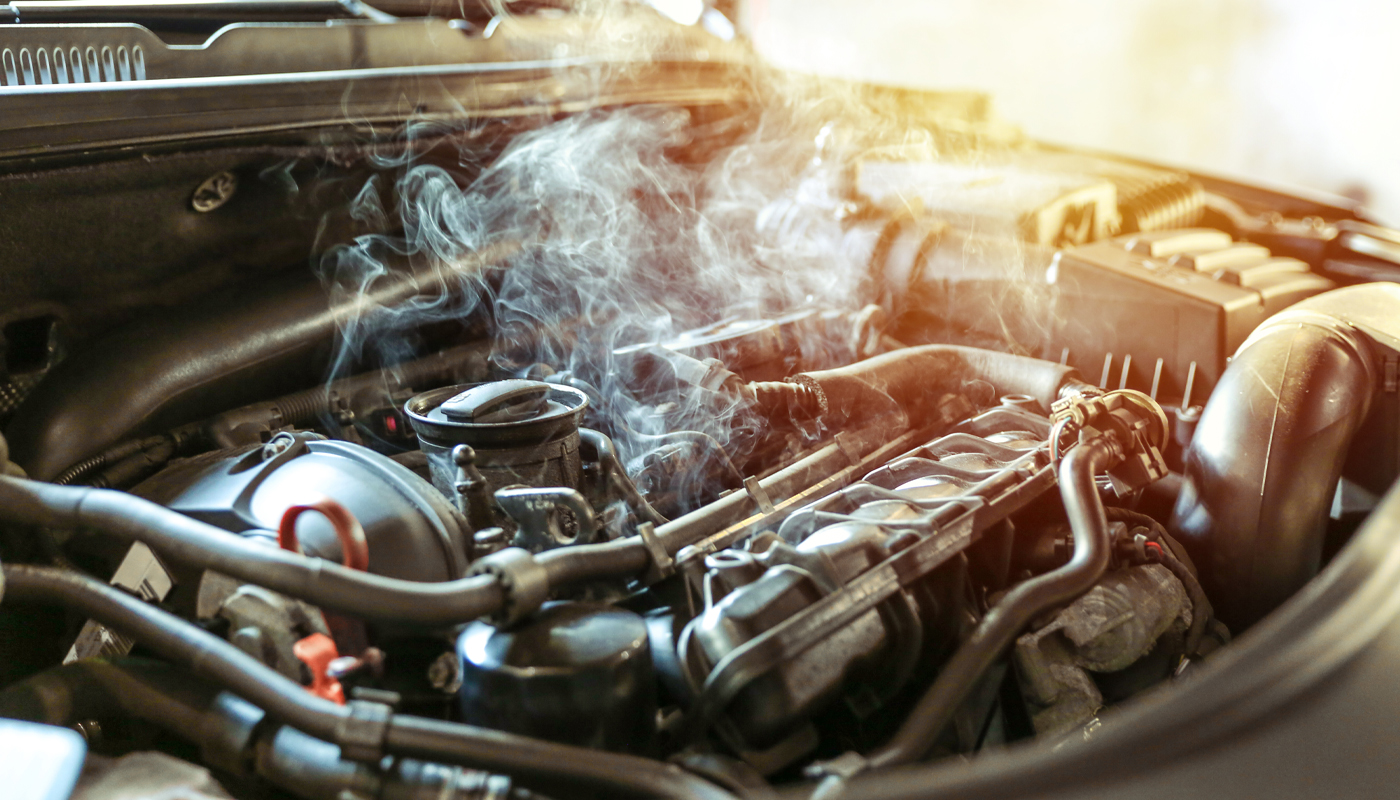How Temperatures Affect Your Gas, Electric or Plug-in Hybrid Vehicle
Learn what happens—and what to do—when your car has to deal with extreme temperatures.
 iStock
iStock
Whether you live in the North, where freezing temperatures are common in the winter, or in the South, where the mercury can reach triple digits in summer, there’s a good chance you and your car deal with temperature extremes at least part of the year.
Cars are designed to operate in a wide range of conditions, but they have their limits, and certain vehicle types may have issues with extreme temperatures. That’s where AAA comes in. No other organization understands cars and the car life cycle like we do, and we’re here to help get you where you’re going in a safe and timely manner.
Read on to learn some of the ways temperature affects the performance and longevity of vehicles, and follow our tips for maintaining and operating yours in the heat of summer and the cold of winter.
The Big Chill: Effects of Cold Weather on Your Vehicle
- Doors and locks can freeze. When the rubber door gasket (the seal between the door and the frame of the car) freezes, opening the door to enter or exit the vehicle can be difficult. Door locks that use a physical key can also freeze and prevent unlocking.
- Ice can collect in the fuel line. Although you aren’t likely to see temperatures reach the freezing point for gasoline (generally around -40 degrees Fahrenheit), you may still have problems if moisture from condensation collects in the fuel line and freezes. Ice in the line interferes with fuel intake, making it more difficult to start the gas or hybrid car and resulting in sputtery engine performance.
- Tires lose air pressure. Tire pressure decreases by about 1 pound per square inch for every 10 degrees Fahrenheit the temperature drops. Air doesn’t have to leave the tire for this loss in pressure to happen; dropping temperatures cause the air to become denser, which leads to lower tire pressure. When tires have low pressure, the rolling resistance is increased, which affects handling and fuel economy. This is especially important for EVs because they have more torque, and tires can wear out more quickly.
- Fluids thicken. Cold temperatures make oil; antifreeze; and power steering, transmission and brake fluids move slower. This causes extra work for your car when you start the engine, and it can make the car’s performance feel sluggish.
One surprising effect of thickening fluids: LCD information screens will be less responsive. That’s because the cold temperatures have the same effect on the liquid crystals as on other liquids—it slows them down.
- Car batteries die. It’s your car battery’s job to turn chemical energy into electrical energy. When that doesn’t happen, the engine won’t start, and the electronics won’t work. One cause of reduced battery performance is the cold. Just as cold temperatures cause fluids to thicken, they slow the chemical reactions that happen inside your car battery.
When it’s 32 degrees Fahrenheit, a gas car or EV battery has only 65% of the strength it has in warm weather, and when it’s 0 degrees Fahrenheit, it has only about 40% of its battery power.
Here’s what you need in a car winter survival kit.
Get info iStock
iStock
Cold Weather Effects on Gas, Electric or Plug-in Hybrid Vehicles
- Get your car checked and serviced for winter driving conditions. AAA-owned Car Care and AAA Approved Auto Repair locations have the technicians and expertise to winterize your vehicle. They’ll make sure your car has the right fluids for cold weather and that they’re at the proper levels, check tires to confirm that they’re suited for winter conditions, inspect and (if necessary) replace wiper blades, test the battery, and more.
- Treat doors that freeze. Using a silicone spray, wipe down the rubber door gaskets to allow the doors to open properly.
- Park in a garage or enclosed space. Protection from the elements can be convenient: If frozen precipitation can’t collect on your car, you won’t have to clear it off.
- Keep your gas tank full. Prevent fuel lines from freezing up by keeping the tank at least half full in cold weather.
- Check your tire pressure. Tire pressure monitoring systems (TPMS) have been required on all new cars since September 2007. A TPMS uses a dashboard warning light to alert drivers when one or more tires are significantly low on air. Don’t wait for a warning light to come on before you deal with underinflated tires; use a gauge to check the pressure in all your tires once a month no matter the temperature, and don’t forget to check the pressure in the spare.
- Warm the vehicle, or not? Start the car and let it idle only for the time it takes you to fasten your safety belt. Although you may think a longer idle would be better for the engine, that short time is enough to ensure lubricating oil gets to all the engine’s vital parts.
- Use heated seats. Your car does less work to power its heated seats than it does to produce sufficient cabin heat. That’s particularly important for electric vehicle (EV) and plug-in hybrid vehicles (PHEV) drivers, because electricity that’s drained from the battery to heat the vehicle will directly affect the EV and to some extent the PHEV’s range.
- Improve visibility. If you weren’t able to park in a garage or enclosed space before a weather event, you’ll need to clear snow, frost and ice off all windows, the headlights and taillights, the mirrors, the hood, and the roof.
- Switch to winter tires. Winter tires are made with specialized rubber compounds that don’t stiffen in the cold like the rubber used in standard tires (which can end up losing traction). This is why these tires are a good choice for those who live in a climate that sees a lot of snow and ice. Winter tires also have deeper treads and a different tread pattern, both of which allow them to channel snow and slush and expel water better than their all-season counterparts.
 iStock
iStock
Effects of Hot Weather on Gas, Electric or Plug-in Hybrid Vehicles
- Sunlight causes paint to fade and oxidize. Left unchecked, the oxidization can even cause the paint to peel. Another type of damage to your car’s finish can come from acidic sources (like bird droppings, dead bugs or some types of mud). If not removed right away, the contaminants can corrode the clear paint layer that’s on the surface, especially when heated by the bright rays of the summer sun.
- Sun and heat can damage the interior. The combination of UV rays and heat buildup can cause damage to the upholstery, dashboard and plastic components. Prolonged direct sunlight can cause cloth upholstery to fade, and leather upholstery can fade and crack. And with the dashboard exposed to direct sunlight as well as intense heat, cracking and fading are common.
- Battery failure. High and low temperatures cause car battery stress that builds up over time. Of the two extremes, heat has a greater impact on a battery than cold. When the air temperature is high, it’s even hotter under the hood of a running vehicle. Extreme heat can result in evaporation and oxidation within the battery, which can accelerate the onset of battery failure.
While most car batteries can last three to five years, lifespan will be affected by driving conditions, maintenance and climate. The battery of a car driven in cold climates (Canada or the northernmost parts of the U.S.) will last longer than that of one operating in Southern regions—typically about 58 months in the North compared to 41 months or less in hot Southern regions.
 iStock
iStock
Tips for Dealing with Hot Weather
- Hide your car from the sun’s rays. Park in a garage or shady spot whenever you can, and use a windshield screen, window shades or a car cover when you can’t.
- Have your car serviced for summer. An oil change is important to keeping the engine running properly and to preventing overheating during the summer months. Before the summer heat is in full force, have your car’s fluids checked, battery tested, brakes checked, and tires inspected (and pressure checked). AAA Members enjoy exclusive benefits at AAA-owned Car Care or AAA Approved Auto Repair locations. Find your nearest shop here.
- Keep the finish clean. To remove road grime and dirt, wash your car regularly. Wax the car (or have it waxed) as needed to protect the clear coat finish. If you notice deterioration in the clear coat, use a dual-action polish and paint oxidation compound.
- Check the battery in your gas-powered vehicle. Have the car battery inspected annually after it is 2 years old if you live in the South or after it is 4 years old if you live in the North. Routine battery inspection (especially before a long trip) can be done at your local AAA-owned Car Care location or at a AAA Approved Auto Repair facility. The technician will check the battery’s charge, the condition of the terminals and the security of the battery mounting (because excessive vibration can shorten battery life).
EV batteries, on the other hand, have significantly longer service lives, even lasting up to ten years. When you’re having your vehicle serviced for other things, you can ask your technician to test it if needed, but it will not require annual inspection.
- Dead battery? No problem. Our skilled technicians can come to you to diagnose your battery on the spot and get you back on the road. For most vehicles needing a battery replaced, we’ll deliver and install a competitively priced, genuine AAA-branded car battery backed by a nationwide three-year limited free replacement warranty.
Don’t need mobile service? AAA vehicle batteries are also available at AAA-Owned Car Care locations and most AAA Approved Auto Repair facilities for purchase and installation by trained technicians–or you can visit a NAPA Auto Parts location and install it yourself. AAA Members receive special discounted pricing.
Electric Vehicle Q&A: Learn more about EV ownership.
Read more iStock
iStock
Additional Weather Considerations for Electric Vehicles
Automakers are always looking for ways to improve the efficiency of all the motors and devices that draw electricity from the battery of an EV. After all, a more-efficient EV will have an increased driving range. Here are a few important innovations:
- Regenerative braking. Most hybrid and fully electric vehicles have a braking system that converts the kinetic energy of the car’s motion to electrical energy that is stored in the vehicle’s high-voltage battery.
- Heat pump. Since electric motors don’t produce the kind of heat that internal combustion engines do to warm the cabin, drivers either use extra power from a fan heater or else they go cold. A third option for EV owners is a heat pump. It works like a refrigerator in reverse, compressing outside air, which causes the condenser to give off heat, which is used to warm the cabin. Heat pumps that are reversible can also be used to warm the battery.
- Preconditioning. By preheating or precooling your car’s cabin before you start your journey, you’ll maximize your driving range and prolong the life of the car’s battery. Instead of drawing power from the EV batteries to heat or cool the cabin, the electricity comes through the wall box or domestic plug socket of your home charging station. Using the vehicle infotainment system or a connected smartphone app, preheating can be set to regular charging times (say, before you leave in the morning for work), or it can be activated when needed.
Special Considerations for How Weather Affects Plug-in Hybrid Vehicles
Impact of Hot Weather
Hot weather can significantly impact the performance and efficiency of PHEVs in several ways:
- Battery Performance: High temperatures can cause the battery to overheat, leading to a reduction in its lifespan and efficiency. Heat can accelerate the chemical reactions within the battery, potentially causing it to lose capacity faster than in moderate conditions.
- Charging Issues: Charging stations and onboard systems might reduce charging speeds in hot weather to prevent overheating. This can lead to longer charging times and potentially more frequent stops if you're on a long trip.
- Gasoline Efficiency: The internal combustion engine (ICE) in hybrid vehicles may also suffer in hot weather. Engines generally operate less efficiently at higher temperatures due to increased strain on cooling systems and air conditioning, which can lead to higher gas consumption.
Impact of Cold Weather
Cold weather poses a different set of challenges for PHEVs:
- Battery Efficiency: Low temperatures can reduce a battery's ability to hold charge and decrease its overall efficiency. Cold weather can increase battery resistance, slowing down the chemical reactions needed to produce power.
- Charging Challenges: Charging in cold weather can be slower, as the battery management system may limit the rate of charge to protect the battery from potential harm. Ensuring your vehicle is parked in a warmer environment or pre-conditioning the battery before charging can help mitigate this issue.
- Gasoline Issues: In cold conditions, the internal combustion engine may have to run more frequently to provide heat and maintain optimal operating temperatures, which can reduce the reliance on electric power and increase fuel consumption.
Understanding how temperature variations affect your plug-in hybrid vehicle can help you make informed decisions about vehicle maintenance, charging habits, and route planning, ensuring optimal performance year-round.
Understanding these weather-related factors can help PHEV owners optimize their vehicle's performance year-round. Simple strategies such as parking the car in a garage, pre-conditioning the cabin while plugged in, or using seat heaters instead of full cabin heating can help mitigate some of these effects.
Give Yourself an Edge
As Mark Twain said when he famously quoted Charles Dudley Warner, “Everybody complains about the weather, but nobody does anything about it.” Well, you may not be able to change the weather, but you can take the proper steps to deal with the ways winter’s chill and summer’s heat affect your car—and you’ll be keeping yourself safe and prolonging the life of your vehicle.
If your car isn’t up to handling extreme temperatures and you’d like to explore other options, AAA can help.